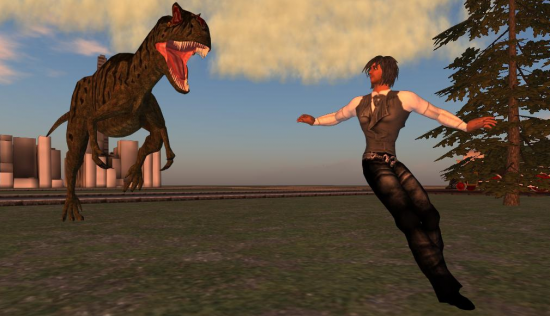Linden Lab has begun open beta testing of what is to be their most substantial feature, mesh imports. They are using collada format for the import, which is a format supported by just about every 3D modeling package on the market. Along with vertex and UV, data skin weights are also included in this format meaning you can create characters and clothing using mesh that will conform to the Second Life avatar animations. We do not know when the full version of this feature will go live but it is certain that mesh will change the virtual world.
Before this point all Second Life 3D content was created with methods uniquely to Second Life. This always has caused a quality problem because while there are many high quality artists and designers, their creations have always been hampered by the shortcomings of the in world building tools. Anyone with experience modeling and texturing for games knows it takes a number of tricks and workarounds to create and implement complex shapes and make them function correctly in world.

Mesh imports will change the way content is made and implemented. Artists will no longer have to work around the arbitrary limitations of prim and sculpted shapes and will be able to create full 3D objects, character and environments in the application of their choice. This allows Second Life to implement the same content creation used by modern games and some other virtual worlds and finally be on par graphically with some of those games.
Interoperability is another possibility with mesh. This means if you were to build a virtual campus in Second Life using mesh and wanted a copy of that to be used in a future virtual world or private simulation it would be quite possible to do so. The other prim based 3D content in Second Life is unique only to Second Life and OpenSim and is unable to be transferred to any other virtual environment.
There have been a number of concerns by veteran users who are going to see a completely new market and quality level in their virtual world. It is true that mesh will make sculpted shapes obsolete and objects made with mesh have a much higher threshold for quality than any previous object. It is natural to feel uneasy on such a drastic change but this is an inevitable and a very necessary evolution for Second Life. Linden Lab must work to keep their world alive and relevant. It is not the task of virtual worlds to settle into what is familiar and safe, but instead to push the boundaries and potential of their world. Any of the talented artists and designers that have been making material for Second Life will find with some extra training and familiarization that their work can be pushed even further with mesh and allow them more creative freedom. Anyone who realizes the quality and freedom mesh grants knows this will only make Second Life look and run better than it ever has in the past and it would be foolish for Linden Lab not to seize the opportunity.
(This article reprinted with permission from Designing Digitally.)
- Understanding the oxymoron of serious games - February 6, 2013
- Virtual campus tours: 4 wrong turns - April 13, 2012
- Medical simulations can benefit healthcare, pharma industries - September 8, 2011
